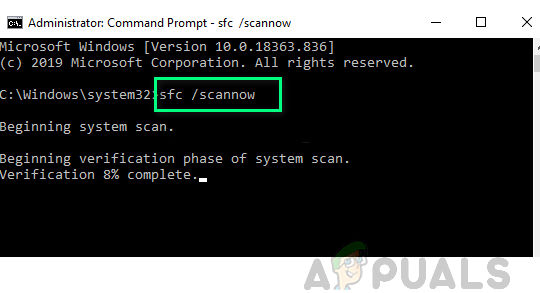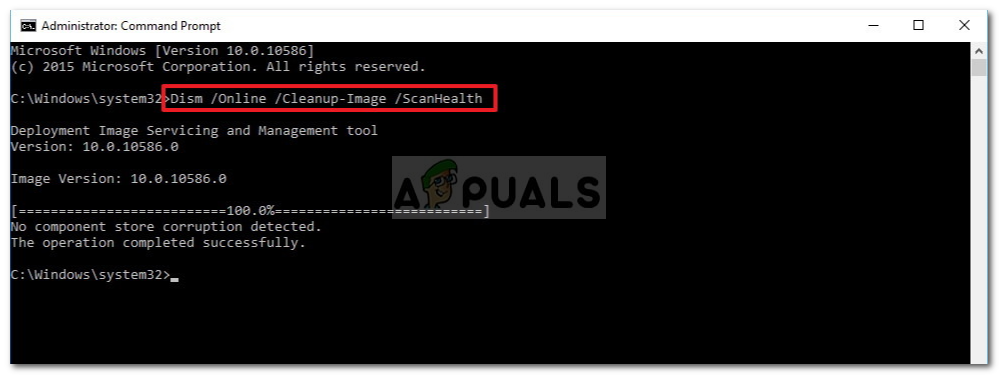As it turns out, there are several different underlying causes that might be causing this Windows Update. Here’s a list of potential culprits that might be preventing you from installing a pending Windows Update: Now that you are familiar with every situation that might be triggering the 0x80240016 error code, here’s a list of methods that other affected users have successfully used to get to the bottom of this issue:
1. Running the Windows Update Troubleshooter
Before you go into more advanced repair strategies capable of resolving the Windows Update problem you’re dealing with, start this troubleshooting guide by checking if Windows 10 is capable of resolving the issue automatically. By default, Windows 10 includes a lot of built-in repair strategies capable of resolving the majority of failures to install a pending Windows 10 update – This is not guaranteed to work, but it’s a good starting point. Some users that we’re facing this issue have managed to resolve the problem and install the pending update by running the Windows Update troubleshooter and applying the recommended fix that pops up at the end of the scan. Note: This troubleshooter contains dozens of repair strategies that will be applied automatically if some type of inconsistency is found. If the scan finds a viable repair strategy, the utility will automatically recommend a viable fix that you can apply with a simple click. Follow the instructions below to deploy the Windows Update troubleshooter to resolve the 0x80240016 error code on Windows 10: If the error code 0x80240016 is still occurring when you attempt to install the pending update or the Windows Update troubleshooter didn’t find a viable repair strategy, move down to the next fix directly below.
2. Resetting every Windows Update Component
In case the built-in troubleshooter that you deployed above didn’t work for you, it’s likely that you’re seeing the 0x80240016 Windows Update error due to an update component inconsistency (especially if you’re seeing this error with every update that you attempt to install). In the vast majority of cases, you will see the 0x80240016 error due to the fact that the updating component is somehow stuck in a limbo state (neither opened nor closed). If this scenario is applicable, you should be able to fix the problem swiftly by resetting Windows Update. Follow the instructions below to reset every Windows Update component from an elevated CMD prompt. If the same error code is still occurring while attempting to install a pending Windows Update, move down to the next potential fix below.
3. Deploying SFC and DISM scans
If refreshing every Windows Update component from the CMD window didn’t fix the issue, you should also consider that some kind of system file corruption is causing this particular Windows Update error. In this case, you should proceed by running a couple of scans with two built-in utilities – System File Checker (SFC) and Deployment Image Servicing and Management(DISM). Note: Even though SFC and DISM share some similarities, we recommend that you run both scans in quick succession in order to improve your chance of fixing the corrupted system files. The ideal place to start is with a simple SFC scan. Important: After you initiate this procedure, it’s very important to NOT close the CMD window even if the utility looks like it froze. Wait patiently until the process is complete because interrupting the operation might cause logical errors on your HDD/SSD. Note: This tool is entirely local and will not require you to be actively connected to the internet. Once the SFC scan is completed successfully, reboot your computer and see if the issue is fixed once the next computer startup is complete by attempting to install the Feature Update once again. I the same error is still occurring, deploy a DISM scan and follow the on-screen prompts to complete the operation. Note: DISM uses a sub-component of Windows Update to download healthy equivalents aimed at replacing the corrupted system files. Because of this, you need to make sure that you have reliable Internet before initiating this operation. Once the DISM scan has been completed successfully, restart your computer once again and see if the 0x80240016 error is now fixed.
4. Turn of Windows Firewall Temporarily
As it turns out, certain security Windows Updates will refuse to install if Windows Firewall is currently performing a background security check. Normally, you should eventually be able to install the pending update if you’re patient enough to allow the background check to finish. But if you are impatient, you should be able to install the pending Windows Update right away by force-stopping Windows Firewall and disabling the real-time protection until the installation of the update is complete. Follow the instructions below to temporarily disable Windows Defender in order to allow the security WU update to install:
How to Fix “Error Code: 0xca020007” While Updating Windows?How to Fix “Error: 0x80244018” When Updating Windows?How to Fix ‘Error Code: 0x80073712’ When Updating WindowsFix: Windows Defender Not Updating in Windows 10











